What's New
Displaying results 1681 - 1690 of 4052
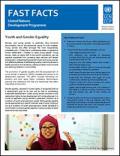
Resource | Publications,
Women, and young women in particular, face structural discrimination due to the patriarchal nature of most societies. Young women are often amongst the most marginalized, vulnerable and – if they live in rural/remote areas, or precarious human settlements – hardest to reach young people. Young women make up nearly half of the world’s population, yet are regularly prevented from accessing basic services and decent employment. Unleashing the potential of girls and young women is an effective pathway to addressing poverty, improving access to health, education and sanitation, making societies more inclusive and reducing violence in communities.
The promotion of gender equality and the empowerment of young women is central to UNDP’s mandate and intrinsic to its development approach. This effort includes advocating for women’s and girls’ equal rights, combating discriminatory practices and challenging the roles and stereotypes that affect inequalities and exclusion.
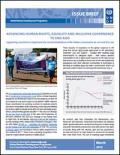
Resource | Publications,
Three decades of experience in the global response to HIV show that human rights-based approaches to HIV prevention, treatment, care and support – coupled with enabling legal environments to safeguard rights – help reduce people’s vulnerability to HIV. A rights based response to HIV helps ensure that services are accessible to those most at risk, and enables key populations and other affected communities to participate in deciding an enabling legal and policy environment, which can also have a direct impact on reducing HIV transmission.
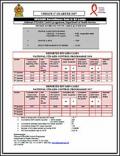
Resource | Fact Sheets,
National STD/AIDS Control Programme, Department of Health Service, HIV/AIDS Estimates for Sri Lanka as of end 2015
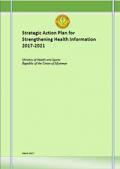
Resource | Publications,
The vision of the new Strategic Action Plan for Strengthening HIS in Myanmar 2017- 2021 is “A strong health information system for a strong health system”. The mission statement of HIS in Myanmar also developed during the strategic planning exercise is “Generating and making accessible comprehensive, integrated and timely health information for decision making at different levels of health system”. The goal of the HIS in Myanmar formulated during the assessment is “ To provide complete, valid, reliable and timely health information for making right decisions at the right time to ensure an equitable, effective, efficient and responsive health system”.
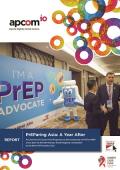
Resource | Publications,
APCOM’s new report “PrEParing Asia: A Year After” outlines the activities that have been ongoing within these eight countries, while also documenting the progressive steps taken in several additional countries within the region. Malaysia, Hong Kong SAR, Indonesia, Myanmar and Laos have conducted a country consultation or a smaller technical group discussion. Vietnam and the Philippines will soon launch the dissemination pilot project.
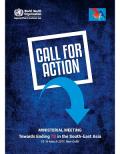
Resource | Publications,
The two-day ministerial meeting held in Delhi was essentially aimed at raising the pitch on TB and garnering political commitment to end TB by 2030. From the above perspective the meeting was a resounding success considering that nine of 11 SEA Region health ministers attended the meeting promising to end TB with renewed momentum. Two countries had high level government representation. One of the core agendas of the meeting was framing the 'Call for Action' declaration and endorsing it by Member States. The 'Call for Action' declaration was signed by all SEA Region countries in an exemplary show of unity to 'bend the curve' and end TB.

Resource | Presentations,
Maternal Mortality Ratio decreased from 539/100,000 live births in 1996 (NHFS) to 258 in 2015 (WHO). Inadequate attention in improving maternal and newborn health services in remote or mountainous areas of Nepal. Both demand-side and supply-side combined package of intervention has greatest improvement in use of maternal and new born health services in remote areas.
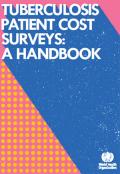
Resource | Tools,
This handbook builds on lessons learned from surveys implemented 2015-2017 and advice provided by the Global task force on TB patient cost surveys. It provides a standardized methodology for conducting health facility-based cross-sectional surveys to assess the direct and indirect costs incurred by TB patients and their households. In addition, it provides recommendations on results dissemination, engaging across sectors in policy dialogue and enabling action and related research for effective modifications in care delivery models, in patient support, and wider cross-sectoral interventions.
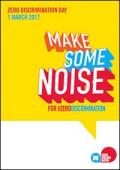
Resource | Publications,
Everyone has talents and skills that can enrich societies and strengthen communities. Welcoming and embracing diversity in all its forms reinforces social cohesion, bringing benefits for all.
Zero Discrimination Day is an opportunity to join together against discrimination and celebrate everyone’s right to live a full and productive life with dignity. No one should be subjected to discrimination on the basis of their gender, gender identity, race, age, disability, ethnic origin, sexual orientation, religion or language, health status or for any other reason.






